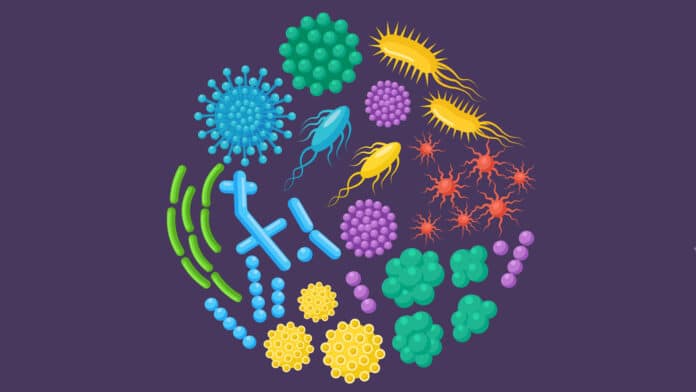Superbugs, antibiotic-resistant bacteria, are a big problem for people’s health worldwide. It’s essential to know how these superbugs evolve so we can find better ways to fight them. In a very important study published in Cell, scientists from the National University of Singapore (NUS) and Imperial College London discovered a new way that bacteria share their genes using virus parasites. This process makes them evolve quickly and become more dangerous and antibiotic-resistant.
Scientists found a process called “lateral cotransduction,” driven by DNA elements called Staphylococcus aureus pathogenicity islands (SaPIs), which use virus parasites to spread their genes. The knowledge gained from this discovery provides us with a better understanding of how harmful bacteria can become increasingly dangerous and develop resistance to antibiotics.
Professor José R. Penadés from the Department of Infectious Diseases, and Director of the Center for Bacterial Resistance Biology at Imperial College London, said, “This breakthrough sheds light on a novel pathway through which bacteria evolve. Given the alarming surge of antibiotic-resistant superbugs, comprehending the mechanisms driving bacterial evolution becomes increasingly critical.”
The lateral cotransduction process is similar to another process called lateral transduction but even more effective. Lateral transduction occurs when sleeping viruses inside bacteria wake up and make more viruses.
In contrast, lateral cotransduction can happen during this waking-up process and when new bacteria are infected. What’s fascinating is that, unlike regular viruses, selfish DNA elements called SaPIs can move with bacterial DNA in lateral cotransduction, allowing them to share genes and efficiently spread bacterial traits continuously.
Assistant Professor Chen revealed that this study shows bacteria’s faster evolution than previously thought, with these parasitic SaPIs surprisingly surpassing viruses in gene-sharing abilities.
Professor Chng Wee Joo from NUS Medicine mentioned that the discovery of lateral cotransduction will revolutionize the understanding of bacterial evolution and its effects on infections and diseases. This research is crucial for making safe treatment decisions in hospitals.
As antibiotic-resistant superbugs become a concern, scientists are exploring new methods to treat them, including phage therapy, which uses viruses called phages to kill harmful bacteria. However, some of these therapeutic phages could unknowingly spread harmful genes in the long run through lateral cotransduction, a newly found process in the study.
Professor Penadés stated, “This process might happen in other bacteria too, and it’s a significant shift in our understanding of bacterial evolution, greatly influencing how we fight antibiotic resistance.” Assistant Professor Chen warned that, “while phages can destroy bacteria in the short term, we need to carefully examine them before using them as a therapy to avoid spreading harmful genes to other cells in the long run.”
In conclusion, the research on lateral cotransduction provides a significant advancement in understanding bacterial evolution and the drivers of antibiotic resistance. By shedding light on this novel mechanism, scientists can work towards developing more effective strategies to combat superbugs and safeguard public health. Further investigations into lateral cotransduction’s prevalence in other bacterial species will help address the challenges of antibiotic resistance and guide future treatment approaches.
Journal Reference:
- Melissa Su Juan Chee, Ester Serrano, et al., Dual pathogenicity island transfer by piggybacking lateral transduction. Cell. DOI: 10.1016/j.cell.2023.07.001.
